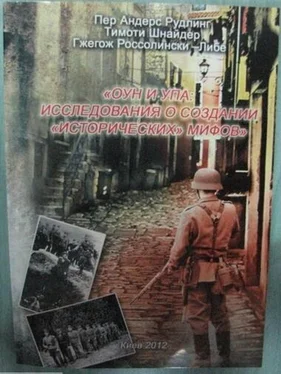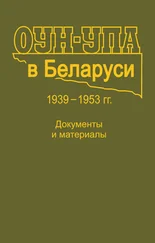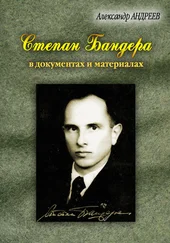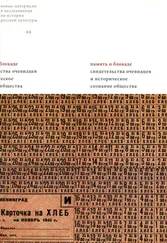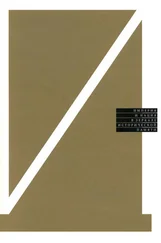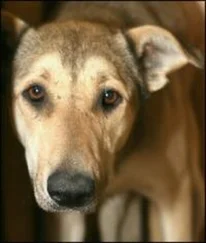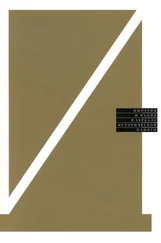“What is also indisputable is that many Jews served in the Soviet secret police during that period of Soviet rule in Western Ukraine. Naturally, Himka fails to mention the Jewish complicity which may have pointed to the motive of any number of oppressors. While being Jewish in and of itself, certainly, was not reason to be killed, being Jewish was not immunity from being attacked when you sided and fought with the enemy.” Askold S. Lozynskyj, “Rewriting history: An evidentary persepective,” KyivPost, February 16, 2010: http://www.kyivpost.com/news/opinion/op_ed/detail/59650/print/ (accessed February 22, 2010).
Volodymyr Serhiichuk, Nasha krov — na svoii zemli (Kyiv: Ukrains’ka vydavnycha spilka, 2000), 56–57; Volodymyr Serhiichuk, Trahediia Volhyni: Prychynyi perebih pol’s’ko-ukrains’koho konfl iktu v roky druhoi svitovoi viiny (Kyiv: Ukrains’ka vydavnycha spilka, 2003). For a discussion on Serhiichuk, see Marples, Heroes and Villains, 232–233, 236–237.
See the interview with Volodymyr V’’iatrovych, to which we will return to later. Masha Mishchenko, “Pratsivnyk SBU: My izdyly v Izrail’ pobachaty dos’e proty Shukhevycha — a ioho prosto ne isnue,” UNIAN, March 25, 2008: http://unian.net/news/print.php?id=242913 (accessed April 8, 2008).
For instance, on November 10, 2010 during the trial in Kyiv regarding the legality of Yushchenko’s collective designation of the OUN and the UPA as Heroes of Ukraine, Petro Mykytovych Perepust, representing the Sumy chapter of the far-right Ukrainian National Assembly-Ukrainian National Self Defense (UNA-UNSO), justifi ed the “murder, dismemberment, and slaughter [i ubyvaty, i pyliaty, i rizati] — that is done all across the world when one people fi ght for their independence, they kill other people.” Legal argument, case 2a-6732/10, “Za Pozovom Vitrenko Natalii Mykhailivni do Prezydenta Ukrainy shchodo vyznannia nezakonnym Ukazu Prezydenta Ukrainy vid 28 sichnia 2010 roku No. 75/2010 ‘Pro vshanuvannia uzhastnykiv borot’by za nezalezhnist’ Ukrainy u XX stolitti,” Okruzhnyi Administratvnyi sud mista Kyeva, November 10, 2010. Press release, November 12, 2010. The proceedings are also available online: http://www.youtube.com/watch?v=znQjFCNCAXg (accessed November 12, 2010). Thanks to Krzysztof Janiga for this material.
In an interview, the 87-year-old Volhynian UPA veteran Ivan Hnatevych Kisliuk (b. 1923) presses the book Armiia bez Derzhavy, by the founder of the original UPA, into my hands, and told me to open to page 253. It reads: “In the end of July 1943 the General Staff of the UNRA issued an appeal to the Ukrainian people, in which it protested against all those measures, which were condemned as the disreputable acts of blinded totalitarians, and emphasized that the full responsibility for the crimes falls upon the leader of the OUN Bandera, Mr. Mykola Lebed’- Ruban.” “See, Ruban, Jew! [zhyd!],” Mr. Kisliuk said, pointing at Lebed’s Ashkenazi-sounding nom de guerre, which to him proved Jewish responsibility for the Volhyn massacres. Bul’ba-Borovets’, Armiia bez derzhavy, 253. Personal interview, Kyiv-Troishchina, Ukraine, September 23, 2010.
Weiner, Making Sense of War, 161–172.
V. R. Nakhmanovych, “Bukovyns’kyi Kurin’ i masovi rozsteli evreiv Kyiva voseni 1941 r.,” Ukrains’kyi istorychnyi zhurnal no. 3 (474), (May — June 2007): 90.
John-Paul Himka, “The Reception of the Holocaust.”
Himka, “War Criminality”; idem, “Central European Diaspora”; Glenn Sharfman, “The Quest for Justice: The Reaction of the Ukrainian-American Community to the John Demjanjuk Trials,” Journal of Genocide Research 2, no. 1 (2000): 65–87.
Petro J. Potichnyj was one of the few exceptions among the pronationalist scholars. He reached out to the Jewish community, aiming at a dialogue. Howard Aster and Peter Potichnyj, Jewish-Ukrainian Relations: Two Solitudes (Oakville, ON: Mosaic Press, 1983); idem, eds., Ukrainian-Jewish Relations in Historical Perspective (Edmonton: CIUS and University of Alberta, 1990).
Berkhoff and Carynnyk, “The Organization of Ukrainian Nationalists,” 149, 151, 152, citing Mykola Lebed’, “Orhanizatsiia protynimets’koho opouru OUN, 1941–1943 rokiv,” Suchasnist’, no. 1–2 (January — February 1983): 154.
Berkhoff and Carynnyk, “The Organization of Ukrainian Nationalists,” 151, citing Wolodymyr Kosyk, “Problems of the History of OUN and UPA,” Ukrainian Review 40 (Spring 1993): 26–27.
Petro J. Potichnyj, in Yevhen’ Shtendera and Petro J. Potichnyj, eds., Litopys UPA, vol. 17, English-Language Publications of the Ukranian Underground (Toronto: Litopys UPA, 1988), 140.
Taras Hunczak, “Between Two Leviathans: Ukraine during the Second World War,” in Bohdan Krawchenko, ed., Ukrainian Past, Ukrainian Present: Selected Papers from the Fourth World Congress for Soviet and East European Studies, Harrogate, 1990 (New York: St. Martin’s Press, 1993), 99.
Alexander Motyl, The Turn to the Right: The Ideological Origins and Development of Ukrainian Nationalism, 1919–1929 (New York: Columbia University Press, 1980), 166.
Alexander Motyl, “Ukraine, Europe, and Bandera,” Cicero Foundation Great Debate Paper, 10/05 (March 2010), 6: http://www.cicerofoundation.org/lectures/Alexander_J_Motyl_Ukraine_Europe_and_Bandera.pdf 6.
“It makes no sense to refer to Eastern Europeans, who were regarded by the Germans as subhumans, as ‘Nazi’ war criminals; they were not allowed to join the Nazi Party.” Myroslav Yurkevich, in “Discussion,” in Bozhyk, Ukraine in World War II, 158. Yet, National Socialism attracted many Eastern Europeans. In fact, Nazi Germany categorically banned any use of swastikas and other Nazi symbols in the émigré press, as well as prohibited the use of the term “National Socialist” in the names of any Slavic émigré organizations in Germany. Iury Hrybouski, “Belaruski rukh i Niamechchyna napiaredadni i u pachatku Druhoi sus’vetnai vainy,” ARCHE No. 5 (80), (May 2009): 152.
Hunczak, “Ukrainian-Jewish Relations,” 44–45. Similarly Mykola Riabchuk describes the OUN’s collaboration and anti-Semitism as “rather disputable” and relies on Motyl’s defi nition, in which collaborators are “individuals or groups who abandon their sovereign aspirations and serve another power’s goals.” Mykola Riabchuk, “Bandera’s Controversy and Ukraine’s Future,” citing Motyl, “Ukraine, Europe, and Bandera,” 6.
Daniel Ursprung, “Faschismus in Ostmittel-und Südosteuropa: Theorien, Ansätze, Fragestellungen,” in Der Einfl uss von Faschismus und Nationalsozialismus auf Minderheiten in Ostmittel- und Südosteuropa, ed. Mariana Hausleitner and Harald Roth (Munich: IKGS-Verlag, 2006), 22.
Alexander Motyl, “Is Putin’s Russia Fascist?” National Interest Online, December 3, 2007: http://nationalinterest.org/commentary/inside-track-is-putins-russia-fascist-1888.
Motyl, “Is Putin’s Russia Fascist?” and idem, “Surviving Russia’s Drift to Fascism,” Kyiv Post, January 17, 2008: http://www.kyivpost.com/opinion/oped/28182/ (both accessed January 15, 2011). Andreas Umland has taken Motyl to task over his use of this terminology. “If we would apply Motyl’s loose conceptualization of fascism to contemporary world history, we might fi nd so many ‘fascisms’ that the term would lose much of its heuristic and communicative value. Motyl’s comment is in so far unconstructive as he deprives researchers of Russian nationalism of an important analytic tool.” Andreas Umland, “Is Putin’s Russia Really “Fascist”? A Response to Alexander Motyl”: http://www.globalpolitician.com/print.asp?id=4341 (accessed January 15, 2011).
Читать дальше
